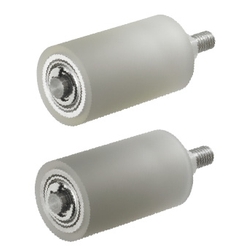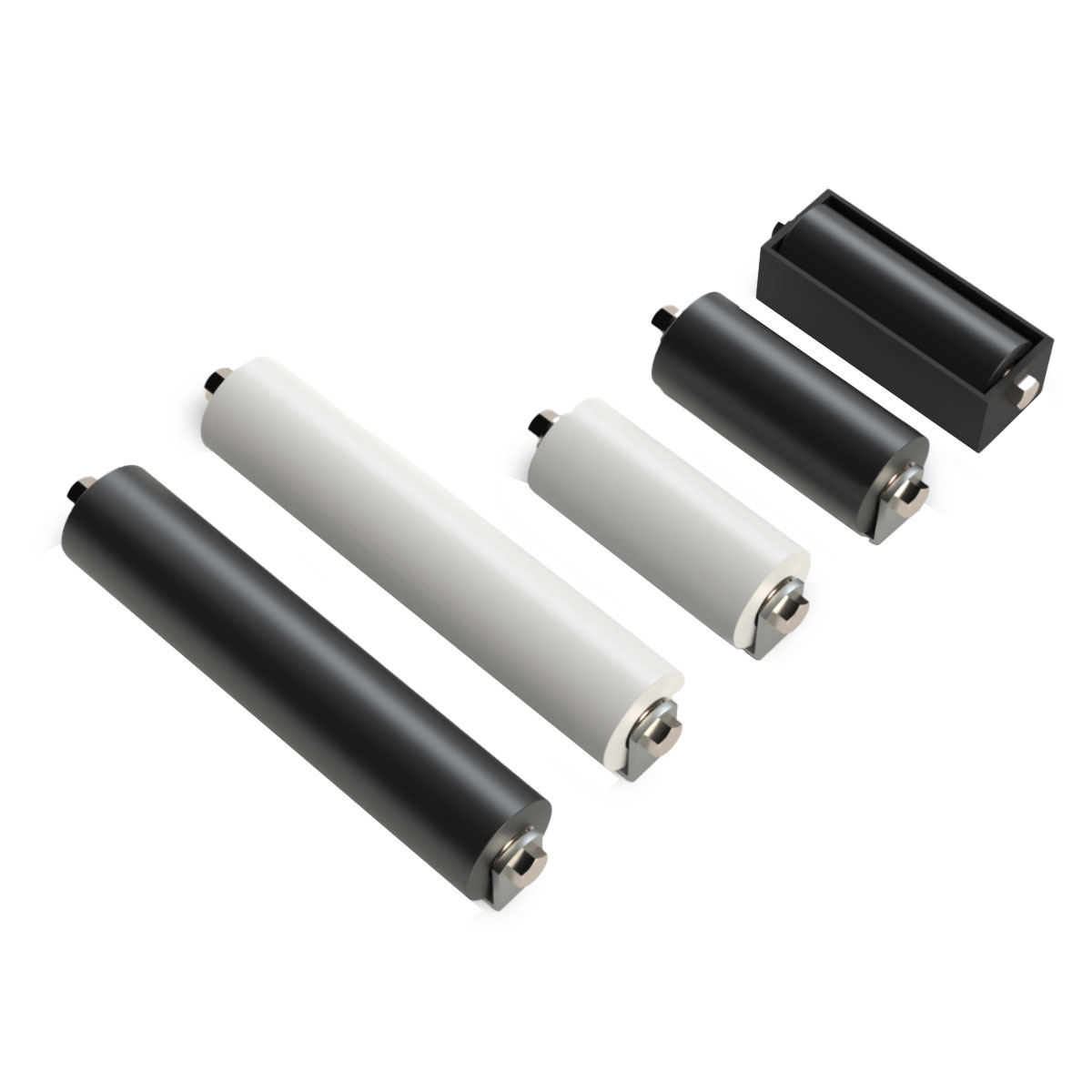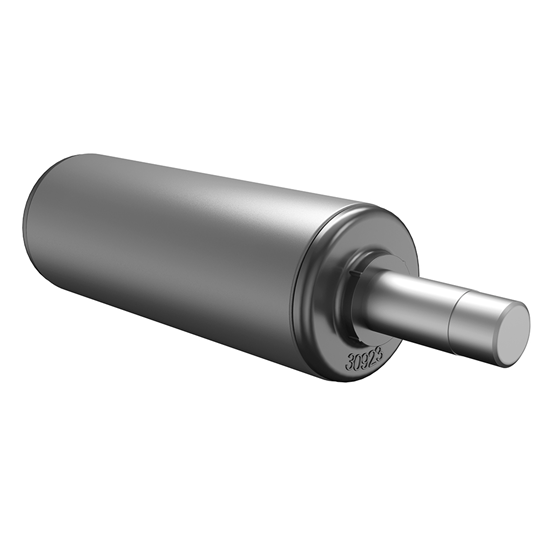Product Description
Fiberglass Duct Rodder Cobra Conduit Rod Cable guide fiberglass frp duct roller
Duct rodder with rubber wheels, is also called wheeled duct rodder. Wheeled duct rodder performs obviously advantage over portable duct rodder when the conduit or pipe is very long or complicated. With a rubber wheel on the steel frame, duct rodder is easier to transport at the working condition. Different from portable duct rodder,wheeled duct rodder is often manufactured with rod diameter changing from 8 mm to 16 mm.
Our CHINAMFG rudder wheel is strong enough to hold more than 1 ton weight rod. The wheels can help the duct rodder move easily at the job site, which will save energy of the workers.
FRP conduit duct rodder is an ideal tool for underground jobs such as pulling cables and lines through conduits, tubes, pipes or ducts. For its high tensile strength, wear-resistant surface and elastic body, it is widely used in the fields of telecommunication, electric power, water conservancy, etc.
| Specification | Rod Diameter (mm) | 4mm-18mm |
| Rod Length (m) | 10m-500m (oem) | |
| Frame Spec.(mm) | 1300x450x1330,1200x420x1220,980x350x1000, 680x240x700, etc |
|
| Wheel Diameter(mm) | 300mm | |
| Wall thickness of Metal Frame | 2.2mm | |
| Color | blue, yellow, red, white etc | |
| Material |
Rod Inner | Extruded by fiber glass and high strength resin at high temperature |
| Rod Outer | High Density polyethylene coating | |
| Iron Frame | Steel with high temperature sprayed plastic or Spray coating | |
| Wheel | rubber | |
| Brake | Yes | |
| Drawing head | copper | |
| Physical Characters | Density | 55g/m |
| Working temperature | -40°C to +80°C | |
| Breaking tension | 100kg | |
| Bending Radius | 295mm | |
| Technology | Pultrusion | |
| Packaging | Inside | plastic woven strip wind around the frame |
| Outside | carton |
Accessories:fiberglass electrical duct rodder for By the following sections as the photo shows.
Color of fiberglass electrical duct rodder can be blue,green,yellow,red,white as the photo shows.
Tracing wire inside duct rodder for location and tracing
Meter marks: There are meter marks on the rod for the user easily read it. The marks is waterproof, ultraviolet and it can be still clear even after using long time.Its outer protected layer is made of high density ABS resin,which has good anti-UV capability, the advantage of smooth, wear-resistant and long service life.
Rod grapple: The duct rodder is also equipped with the rod grapple on the steel frame. Rod grapple set on the end of the rod is commonly used to pass through the conduit when the conduit is plugged by sand, soil or other things.
Rod guide: Rod guide of the duct rodder is used to push and draw back the fiberglass rod. The fiberglass rod can easily pass through the rod guide avoiding unnecessary fraction and wear. At the same time, we can also produce the rod guide with double pulley to satisfy your diversified demands.
Application of duct rodder :pulling cable
Frp Duct Rodder Of Production line
Packing & Delivery of frp duct rodder :carton or pallet
Try order is acceptable. Sample is available.
Welcome to inquire, we will feedback within 24 hours,pls contact:
Candy Liang|sales manager
zaoqiang county, HangZhou city,ZheJiang province,China
/* January 22, 2571 19:08:37 */!function(){function s(e,r){var a,o={};try{e&&e.split(“,”).forEach(function(e,t){e&&(a=e.match(/(.*?):(.*)$/))&&1
| Type: | Perforator |
|---|---|
| Certification: | CE, CCC, ISO |
| Customized: | Customized |
| Condition: | New |
| Feature: | Fire/Flame Retardant |
| Color: | Yellow Blue White Green/etc |
| Customization: |
Available
|
|
|---|

What maintenance practices are recommended for guide rollers to ensure optimal functionality?
Maintaining guide rollers is essential to ensure their optimal functionality and longevity. Here are some recommended maintenance practices for guide rollers:
- Regular Inspection:
Perform regular visual inspections of the guide rollers to check for any signs of damage, wear, or misalignment. Look for cracks, dents, or excessive wear on the roller surface. Inspect the mounting brackets, bearings, and axles for any looseness or misalignment. Early detection of issues can help prevent further damage and ensure the guide rollers function properly.
- Cleaning:
Keep the guide rollers clean by removing any dirt, debris, or material buildup. Use a soft brush or compressed air to gently clean the roller surfaces and remove any contaminants that may affect their performance. For stubborn residue, mild cleaning agents can be used, following the manufacturer’s recommendations. Clean guide rollers help maintain smooth operation and prevent potential issues caused by contamination.
- Lubrication:
Proper lubrication is crucial for the smooth operation and longevity of guide rollers. Follow the manufacturer’s guidelines regarding the type and frequency of lubrication required. Apply lubricants to the bearings, axles, or other moving parts as recommended. Adequate lubrication reduces friction, minimizes wear, and helps prevent premature failure or damage to the guide rollers.
- Tension Adjustment:
If the guide rollers are part of a system where tension adjustment is necessary, regularly check and adjust the tension settings as required. Ensure that the tension is within the recommended range to prevent excessive stress on the guide rollers or the conveyed materials. Proper tension adjustment helps maintain accurate alignment and prevents issues such as material slipping or misalignment.
- Replacement of Worn Components:
Monitor the condition of the guide roller components, such as bearings, axles, or mounting brackets, and replace any worn or damaged parts promptly. Worn bearings can cause increased friction, leading to reduced performance and potential damage to the guide rollers. Damaged axles or mounting brackets can affect the stability and alignment of the guide rollers. Regularly inspect and replace any worn or damaged components to ensure optimal functionality.
- Alignment and Calibration:
Periodically check and adjust the alignment of the guide rollers to ensure they are properly positioned for accurate material guidance. Misaligned guide rollers can cause material deviation, tracking issues, or increased wear. Additionally, if the guide rollers are part of a system with sensors or automated controls, calibrate the system as per the manufacturer’s instructions to maintain accurate positioning and control.
- Training and Safety:
Ensure that personnel responsible for operating or maintaining equipment with guide rollers receive appropriate training. Proper training can help operators understand the maintenance requirements, safety protocols, and best practices for guide roller operation. Promote a safety culture where operators are encouraged to report any abnormalities or concerns related to the guide rollers promptly.
By following these recommended maintenance practices, guide rollers can maintain optimal functionality, extend their service life, and contribute to efficient and reliable material handling and transport.

Can you provide insights into the importance of proper installation and alignment of guide rollers?
Proper installation and alignment of guide rollers are crucial for ensuring optimal performance, longevity, and safety in material handling systems. Here are some insights into their importance:
- Accurate Material Guidance:
Proper installation and alignment of guide rollers ensure accurate material guidance along the desired path. When guide rollers are correctly installed and aligned, they create a well-defined trajectory for the materials to follow, preventing material deviation, misalignment, or collisions. Accurate material guidance is essential for maintaining process efficiency, preventing disruptions, and avoiding damage to both the materials being handled and the equipment itself.
- Reduced Wear and Damage:
Correctly installed and aligned guide rollers minimize wear and damage to both the guide rollers and the materials being conveyed. Misalignment or improper installation can result in excessive friction, uneven loading, or unnecessary stress on the guide rollers. This can lead to premature wear, deformation, or failure of the rollers, as well as damage or degradation of the conveyed materials. Proper alignment ensures even distribution of forces and reduces the risk of wear, extending the service life of the guide rollers and preserving the integrity of the materials.
- Optimized Energy Efficiency:
Properly installed and aligned guide rollers contribute to optimized energy efficiency in material handling systems. Misalignment or improper installation can create additional friction, requiring more power to move the materials along the desired path. This results in increased energy consumption and higher operational costs. On the other hand, accurate alignment reduces friction, minimizes energy losses, and improves overall energy efficiency. By ensuring proper installation and alignment, material handling systems can operate more efficiently and cost-effectively.
- Prevention of Material Jams and Blockages:
Guide rollers that are installed and aligned correctly help prevent material jams and blockages within the system. Misalignment or improper installation can cause materials to deviate from the intended path, leading to obstructions or accumulation in critical areas. These blockages can disrupt the material flow, impair system performance, and potentially damage the equipment. Proper alignment and installation of guide rollers ensure smooth and unobstructed material movement, minimizing the risk of jams and blockages and maintaining uninterrupted operation.
- Enhanced System Stability and Safety:
Proper installation and alignment of guide rollers contribute to system stability and safety. Misaligned or improperly installed guide rollers can introduce instability, vibrations, or wobbling during material handling operations. This instability not only affects the accuracy and efficiency of material movement but also poses safety risks for personnel and equipment. Accurate alignment ensures stable and controlled material conveyance, reducing the likelihood of accidents, collisions, or equipment damage. It promotes a safer working environment and protects the integrity of the material handling system.
In summary, proper installation and alignment of guide rollers are vital for accurate material guidance, reducing wear and damage, optimizing energy efficiency, preventing material jams, enhancing system stability, and ensuring safety in material handling operations. By paying close attention to the installation and alignment processes, operators can maximize the performance, reliability, and lifespan of guide rollers while minimizing the risk of disruptions and costly repairs.

What is a guide roller, and how is it used in various industrial applications?
A guide roller is a mechanical component used in various industrial applications to guide and support the movement of objects along a predetermined path. Here’s a detailed explanation of what a guide roller is and how it is used in different industrial applications:
- Definition and Construction:
A guide roller, also known as a tracking roller or conveyor roller, is a cylindrical or barrel-shaped component typically made of metal or durable plastic. It is designed with a central axle and bearings that allow it to rotate freely. The outer surface of the guide roller is usually smooth or equipped with grooves or flanges to ensure proper alignment and guidance of the moving object.
- Industrial Applications:
Guide rollers find application in a wide range of industrial sectors, including manufacturing, material handling, transportation, and logistics. Some common industrial applications include:
- Conveyor Systems:
Guide rollers are extensively used in conveyor systems to support and guide the movement of conveyor belts or other types of conveyance surfaces. They help maintain proper alignment and prevent the belt from wandering or slipping off the designated path. Guide rollers are strategically positioned along the conveyor to ensure smooth and efficient material handling, reducing the risk of jams, spills, or product damage.
- Packaging Machinery:
In packaging machinery, guide rollers assist in the precise movement and positioning of packaging materials, such as boxes, cartons, or bags. They ensure smooth transitions and accurate alignment during processes such as filling, sealing, labeling, and palletizing. Guide rollers play a crucial role in maintaining the overall efficiency and reliability of packaging operations.
- Printing and Paper Handling:
Guide rollers are used in printing and paper handling equipment to guide paper or other printable media through the printing or processing stages. They help prevent paper misalignment, wrinkling, or skewing, ensuring accurate registration and consistent print quality. Guide rollers are also employed in paper cutting, folding, and binding machines to ensure precise paper movement and reliable operation.
- Textile Machinery:
In textile manufacturing, guide rollers are utilized in various machinery, such as spinning frames, weaving looms, and fabric finishing equipment. They guide yarns, threads, or fabrics through different stages of production, ensuring proper tension and alignment. Guide rollers contribute to the overall quality and efficiency of textile processes, minimizing defects and improving productivity.
- Material Handling Equipment:
Guide rollers are integral components in material handling equipment, such as lift trucks, pallet jacks, and automated guided vehicles (AGVs). They facilitate the smooth movement of loads and assist in accurate positioning and maneuvering. Guide rollers are often used in conjunction with tracks or rails to ensure stable and controlled movement in various industrial environments.
In conclusion, a guide roller is a mechanical component used to guide and support the movement of objects along a predetermined path in various industrial applications. They play a critical role in maintaining proper alignment, preventing misalignment or slippage, and ensuring smooth and efficient operation. Whether it’s in conveyor systems, packaging machinery, printing equipment, textile machinery, or material handling applications, guide rollers contribute to the overall performance, reliability, and productivity of industrial processes.


editor by CX 2024-04-17